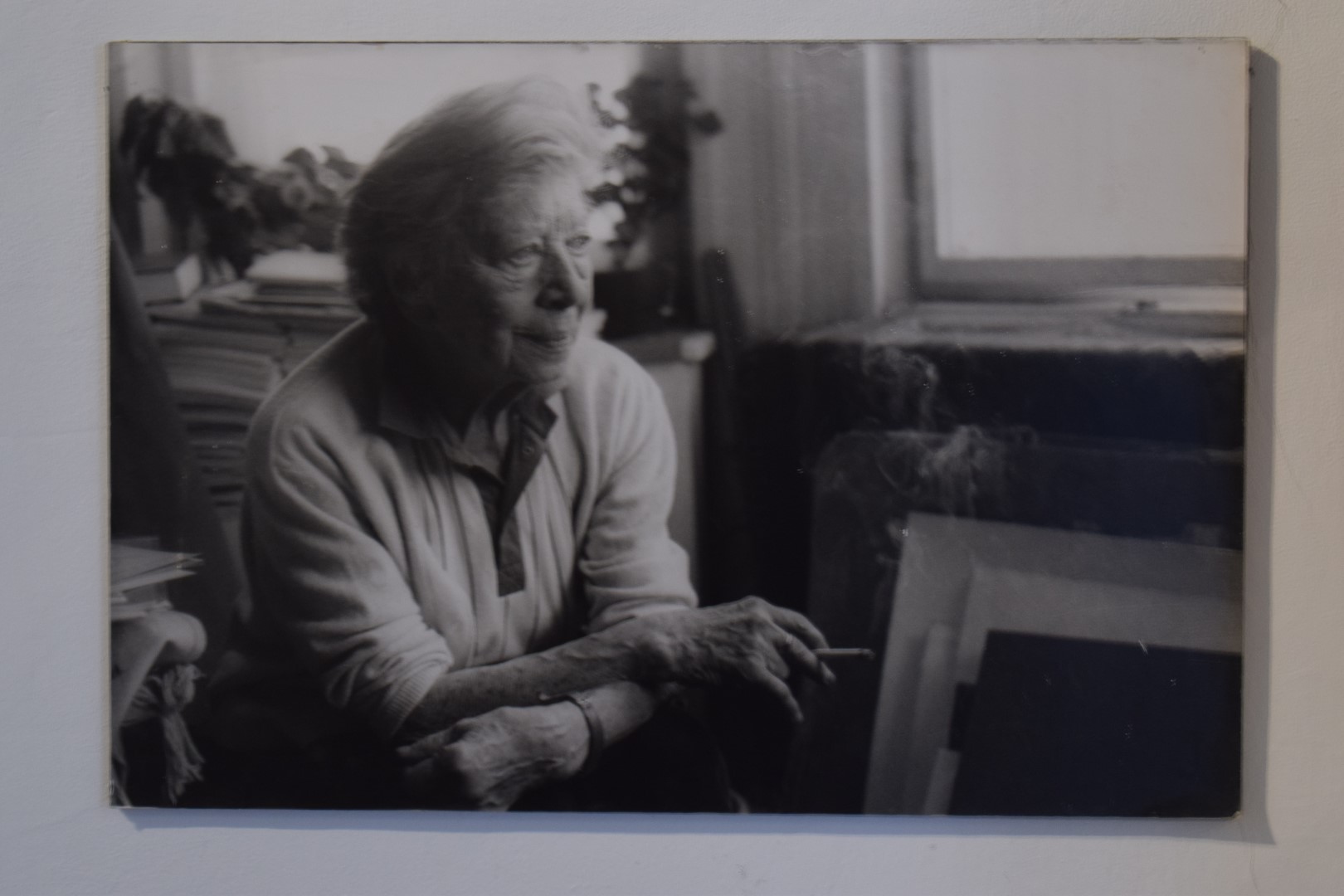PIROSKA SZÁNTÓ
Contributions to culture and science
From the early 1940s, influenced by the late surrealist works of Lajos Vajda, she found the recurring feature of her pictorial thinking, the surrealistic, anthropomorphized depictions of plants and animals: drying corn, sprawling cabbage heads, stubborn, hard poppies, fallen butterflies, all testify to the artist’s emotions. Despite stylistic changes, the intimate relationship with nature has always remained a fundamental characteristic of her art. She synthesised these aspirations in her large-scale tapestry Cantata Profana. In the second half of the 1950s, new stylistic features emerged in her work. Sparkling colours are forced into constructions of solid black lines.
Although her artistic thinking had already been characterised by a tendency to work on a theme in series, from the 1960s onwards this was intensified, and the artist often used materials which reflected the themes of the works. For example, her constructive ink drawings of landscapes, in the early 1960s, are reminiscent of the activist impetus of the time. In her works she captured the rapidly decaying traditional culture and the erosion of traditional moral values. She was inspired by a group of falling roadside crosses, bent plaster Christ figures and decaying food left on cemeteries, which she painted with lapidary simplicity from the end of the decade onwards.
Short biography
Piroska Szántó (Kiskunfélegyháza, 7 December 1913 – Budapest, 2 August 1998) Hungarian painter, graphic artist, writer, Meritorious and Outstanding Artist, Kossuth Prize winner. Third wife of the poet István Vas. She was born to Lajos Szántó (Steiner) and Szeréna Bauer in a Jewish family. She began her studies at the College of Applied Arts in 1931, and in 1932 she enrolled at the Hungarian Academy of Fine Arts in the class of István Szőnyi. Her first husband was photographer Gusztáv Seiden. Her second husband was István Vas, a poet. In 1934 she joined the Socialist Artists’ Group and its successor, the Society of Socialist Artists, which was founded in 1939-1940. In 1937, at the invitation of Endre Bálint, she went to Szentendre, where she joined the circle of young artists around Dezső Korniss and Lajos Vajda. From 1945 to 1948, until its dissolution, she was a member of the European School. She held her first solo exhibition in 1946.
Interesting facts
Recognitions:
- Munkácsy Mihály Award (1958, 1971)
- Certaldó Silver Medal (1965)
- Gold Medal of Labour (1973)
- Artist of Merit (1973)
- Kossuth Award (1983)
- For Socialist Hungary (1983)
- Outstanding Artist (1985)
- Pro Urbe Budapest Award(1992)
- Middle Cross of the Order of Merit of the Republic of Hungary (1994)
- Déry Tibor Award (1998)
Honorary Citizen of the City of Kiskunfélegyháza (1998)

